 December 10, 2009 John E. Ross, KD8IDJ, Editor
| |||||||||||
+ Available on ARRL Audio News + Public Service: Utah Hams Coordinate Rescue
In areas where cell phone signals just won't work, Amateur Radio gets through. That's what Brent Yeates, KA7FAP, of North Logan, Utah, found out just before noon on Wednesday, December 2: He came across a dairy truck that had crashed and rolled over in the Logan River as he drove on Route 89 through Logan Canyon. As 38,000 pounds of dairy products were spilling into the Logan River, Yeates waded through the cold river to help get the driver out of the truck's cab and then put out a call on his handheld transceiver. Read more here. + Spotlight on Amateur Radio: Major Computer Publication Devotes January 2010 Issue to Amateur Radio
Emergencies may get all the attention in the press, but lately, the technological side of Amateur Radio has been showing up a lot in places that are read by the people who make next year's trends. Hams indeed are technical and creative people, consummate MacGyvers. To kick off the new year, the computer magazine Linux Journal has come out with an entire issue dedicated to Amateur Radio and the creative uses of open source computer programs. This 80 page issue features Tux, the Linux mascot on its cover wearing a pair of headphones, holding a microphone -- and even sporting an Emergency Coordinator badge around his neck -- hooked up to an HF transceiver. The issue has headlines on the cover such as "Amateur Radio and Linux -- Open Source for the New Generation," and "Get Started with Amateur Radio," and includes articles like "When All Else Fails -- Amateur Radio, the Original Open-Source Project" by David Lane, KG4GIY. Read more here. + Scott Robbins, W4PA, to Purchase Vibroplex
ARRL Publications: ARRL Licensing Study Guides -- Coming to an eBook Reader Near You
ARRL is pleased to announce that owners of Kindle -- an electronic book reader sold by Amazon.com -- can now download ARRL's Tech Q&A directly from the online bookseller for use on their Kindle. Kindle is shaped much like a book with a paper-like screen that displays text and pictures. Those who have the Kindle application installed on their Apple iPhone or iPod touch can also download the book for use on these devices. When you download the Tech Q&A, you can gain access quickly and easily, smoothing the path to your first ham radio license. This ideal study tool -- whether you're at home, in the office, traveling or just on the go -- lets you review the questions and answers from the entire Technician question pool so you can pass the 35-question exam. Kindle versions of the General Q&A and the Amateur Extra Q&A will be available sometime in January. All three can be purchased from Amazon.com for $9.99 each. + Organizational: Marc Tarplee, N4UFP, Appointed South Carolina Section Manager
Marc Tarplee, N4UFP, of Rock Hill, has been appointed the new ARRL South Carolina Section Manager. He will complete the term of Jim Boehner, N2ZZ, who was elected ARRL Roanoke Division Vice Director last month. When Boehner announced that he was stepping down from the Section Manager post he has held since January 2003, he recommended Tarplee, the South Carolina Section Technical Coordinator, for the position. Tarplee and Boehner both take on their new positions January 1, 2010. According to the Rules and Regulations of the ARRL Field Organization, when a vacancy in the office of Section Manager occurs between elections, the position is filled by appointment by the Membership and Volunteer Programs Manager in consultation with that Division's Director. MVP Manager Dave Patton, NN1N, consulted with Roanoke Division Director Dennis Bodson, W4PWF. Tarplee has been South Carolina's Technical Coordinator for almost seven years, first appointed by Boehner in January 2003. Tarplee's term of office as Section Manager will continue through December 31, 2010. The Doctor Is IN: Focusing on 10 Meters By ARRL News Editor S. Khrystyne Keane, K1SFA
Now with the ARRL 160 Meter Contest come and gone, it's time for me to focus on the opposite end of the HF spectrum: 10 meters. You guessed it -- I'm gearing up for the 37th running of the ARRL 10 Meter Contest. This contest has a bit of a twist to it: Operators have the choice of using CW only, SSB only or they can mix it up and use both. So as I prepare this week for the 'test, I went to ask the Doctor what is so special about 10 meters. Is there anything I need to be aware of and watch out for this weekend? Check up on what the Doctor has to say here. + Regulatory: FCC Dismisses Two Petitions
On Wednesday, December 9, the Federal Communications Commission dismissed two separate Petitions for Rulemaking. The first Petition was filed by Murray Green, K3BEQ, concerning the operation of repeater stations in the Amateur Service. The other Petition, filed by Glen Zook, K9STH, requested amending Section 97.119(a) to change how often stations must identify themselves. Read more here. + Now You Know!: The ARRL 10 Meter Contest and Satellites By ARRL News Editor S. Khrystyne Keane, K1SFA This weekend marks the 37th running of the ARRL 10 Meter Contest. Back in November 1973 when the contest was first announced in QST, the rules differed slightly from how they stand now. This event began due to the interest that radio amateurs showed in the 10 meter band, thanks to the 5-band awards offered by the ARRL. "Occupancy is an important issue of the day as is proof that there's life in the old band yet," the article stated. "At a recent convention the matter was raised and met with enthusiastic response. Rather than postpone the idea for another year, the consensus was 'let's give it a try for '73,' prompting a recommendation by the Contest Advisory Committee."
In 1973, each completed two-way QSO was worth 2 points, except QSOs with a US Novice were worth double that. The article pointed out that certain FCC-issued Novice call signs look a little strange: "Novices in KZ5 and KG4 have strange call signs -- a Canal Zone Novice has an 'N' at the end of the call, such as KZ5AAN. A Novice in Guantanamo Bay has an 'N' after the number, such as KG4NAA. All others replace the K with a W (i.e. WL7, WH6, etc.). If you work a station once on cw you can work him again on phone. Oscar QSOs also count." Oscar QSOs? As in the satellite? Yes! The 1973 rules stated that "Oscar 6 contacts may be counted. All cw QSOs must take place between 28.0-28.5 MHz except those made though Oscar 6." The article also advised contest participants to stay clear of 29.45-29.55 MHz, as these were the Oscar downlink frequencies. Beginning in 1973 and continuing through 1979, QSOs made via the Oscar satellites counted for credit in the ARRL 10 Meter Contest. Beginning in 1980, after 10 meters had seemingly come back to life, the CAC no longer accepted the QSOs for credit in the contest. Now you know! + Silent Key: Ambassador William A. Wilson, K6ARO (SK)
William A. "Bill" Wilson, K6ARO -- the first US Ambassador to the Holy See (the Vatican) -- passed away from cancer early on the morning of Saturday, December 5. He was 95. First appointed as presidential envoy to Rome in 1981 by President Ronald Reagan, Wilson was appointed the first full ambassador to the Holy See in 1984, once official relations were established, serving until 1986. Read more here. Solar Update
Tad "When I behold, upon the night's starr'd face" Cook, K7RA, reports: Finally! A sunspot appeared on Wednesday, December 9, giving us a daily sunspot number of 13 -- this followed 16 days of no sunspots. The new group is number 1034, and need we say it is a Solar Cycle 24 spot? Cycle 24 spots were news at one time, but we haven't seen a Solar Cycle 23 spot since number 1016 on April 29-30, 2009. Solar Cycle 23 peaked around 8-9 years ago. Excitement builds for this weekend's ARRL 10 Meter Contest. Will sunspot activity amount to enough to enhance 10 meter propagation? The latest prediction shows a rising solar flux, 74 and 75 on December 10-11 and 77 from December 12-16; this must correspond to the new sunspot swinging into view, instead of peeking over the horizon as it did on Wednesday. Even without sunspots, Geminids meteor showers have intensified with each passing year as Earth moves deeper into the debris stream from extinct comet 3200 Phaethon. The predicted peak of the meteor shower is about five hours after the end of the contest and there is a good chance that ionized comet trails could enhance 10 meter propagation this weekend. Look for more information in the Solar Update, available on the ARRL Web site on Friday, December 11. For more information concerning radio propagation, visit the ARRL Technical Information Service Propagation page. This week's "Tad Cookism" brought to you by John Keats' When I Have Fears That I May Cease to Be. This Week on the Radio This week, the ARRL 10 Meter Contest is December 12-13. The Feld Hell Sprint is December 12. The MDXA PSK DeathMatch and the International Naval Contest are December 12-13. The NA High Speed Meteor Scatter Winter Rally is December 12-16. The SKCC Weekend Sprint and the CQC Great Colorado Snowshoe Run are December 13. Next week, the Russian 160 Meter Contest is December 18. The OK DX RTTY Contest is December 19. The Croatian CW Contest is December 19-20 and the Lighthouse Christmas Lights QSO Party Is December 19-January 3. The ARCI Holiday Spirits Homebrew Sprint is December 20, the Run for the Bacon QRP Contest is December 21 and the SKCC Sprint is December 23. All dates, unless otherwise stated, are UTC. See the ARRL Contest Branch page, the ARRL Contest Update and the WA7BNM Contest Calendar for more info. Looking for a Special Event station? Be sure to check out the ARRL Special Event Station Web page. + ARRL Headquarters Closed for Christmas, New Year's Holidays
ARRL Headquarters will be closed Friday, December 25, 2009 and Friday, January 1, 2010 in observance of Christmas and New Year's Day. There will be no W1AW bulletins or code practice transmissions those days. There will be no ARRL Letter or ARRL Audio News on Thursday, December 24 and 31. We wish everyone a safe and joyful holiday season and a prosperous 2010. ARRL Continuing Education Course Registration
| |||||||||||
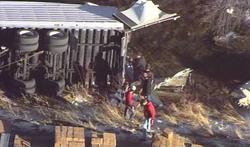
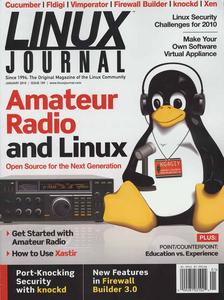
 Scott Robbins, W4PA, of Knoxville, Tennessee, told the ARRL that he has signed an agreement to purchase The Vibroplex Company, Inc from present owner Felton "Mitch" Mitchell, W4OA, effective December 21, 2009. "Vibroplex represents the great tradition of CW operation in Amateur Radio going back many, many years," Robbins told the ARRL. "I'm tickled to be able to continue the more than 100 years of history that has gone into this company." Robbins -- who has been employed with Ten-Tec Inc since 1995 (he has been Product Manager for Ten-Tec's Amateur Radio equipment line since 1997) -- will leave his position in mid-December to take over full-time management and ownership of Vibroplex. "It's a great opportunity to continue the more than 100 years of tradition that the Vibroplex name represents," Robbins said. Read more
Scott Robbins, W4PA, of Knoxville, Tennessee, told the ARRL that he has signed an agreement to purchase The Vibroplex Company, Inc from present owner Felton "Mitch" Mitchell, W4OA, effective December 21, 2009. "Vibroplex represents the great tradition of CW operation in Amateur Radio going back many, many years," Robbins told the ARRL. "I'm tickled to be able to continue the more than 100 years of history that has gone into this company." Robbins -- who has been employed with Ten-Tec Inc since 1995 (he has been Product Manager for Ten-Tec's Amateur Radio equipment line since 1997) -- will leave his position in mid-December to take over full-time management and ownership of Vibroplex. "It's a great opportunity to continue the more than 100 years of tradition that the Vibroplex name represents," Robbins said. Read more 
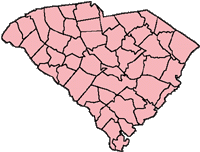
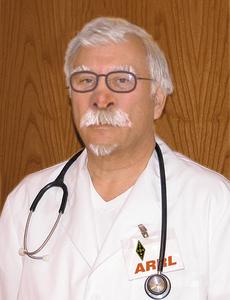
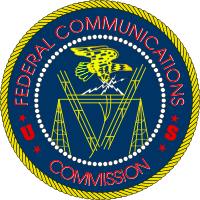
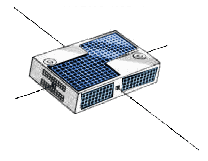

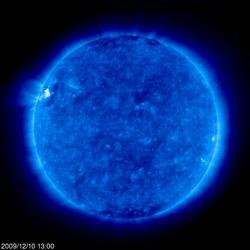

 Registration remains open through Sunday, December 27, 2009, for these
Registration remains open through Sunday, December 27, 2009, for these 







